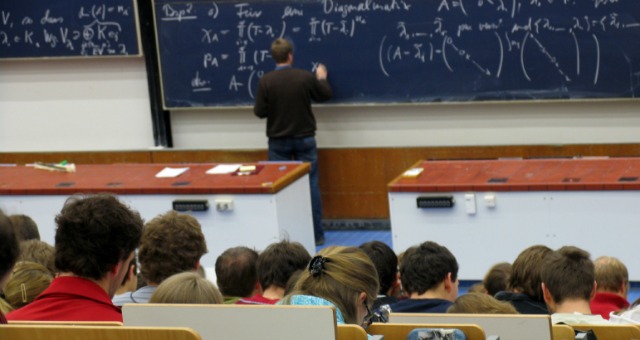|
By Maryellen Weimer, PhD
Some thoughts about change—not so much what to change, as the
process of change, offered in light of its slow occurrence.
Yes, lecture is a good example. In a recent survey, 275 econ faculty who teach principles courses reported they lectured 70
percent of the class time, led discussion 20 percent of the time, and had
students doing activities for 10 percent of the time. The article cites studies
in that field from the mid-’90s reporting similar percentages. Maybe some other
fields have changed more, but evidence supports a continuing reliance on
lecture in many fields.
However, lecture isn’t the only example of where we’re slow to
change. Many aspects of teaching—course design, approaches to testing,
assignments, and grading—have also changed little. Granted, some faculty do change, a lot and regularly, but not the majority.
The question is, “Why?” Here are some possibilities I’ve been considering.
Change is harder than we think. We are so vested in our teaching, and, like our students, we
are error averse. Try something new, and there’s a risk of failure. There’s
risk with what we do every day, but it feels safer to go with the tried and
true. And most of the time, what’s new has to be revised, tweaked, and further
refined. First time through, it doesn’t go as smoothly as what we’re used to
doing.
The work in cognitive psychology on the use of deliberate
practice to develop expertise is relevant here. It’s practice with specific
characteristics: it involves difficult tasks that require focus
and effort to achieve. Developing expertise also involves work on specific
components of the task. There is a need for feedback from a coach with the
ability to analyze the performance and propose how it can be improved. And the
learner must reflect on both the performance and the feedback. As the name
implies, deliberate practice means planned, purposeful practice, a consistent
and concerted effort to improve.
Faculty tend to underestimate the complexity involved in changing
teaching. They approach it with a Nike
“just do it” attitude. That can-do attitude is spot-on, but the approach to
change is too often piecemeal and reactive. “Oh, that sounds like a good idea.
I’ll try that.” Or “Gee, that might be a potential fix,” for whatever problem
is occurring. The hodge-podge infusion of new techniques, interesting ideas,
and promising strategies circles around effective teaching rather than moving
toward it with a map and designated route.
The “just do it” approach implies implementation before
consideration of goals—what the change will accomplish and how to figure out
whether it does. A range of issues bear on the challenges of assessing change.
Many of us have unrealistic expectations for success. We want the change to
work perfectly right from the start and be a “top 10” learning experience for
every student and in every course. We are noble in our aspirations but
unrealistic about outcomes. Instructional changes don’t work perfectly, we
discover. But then, how often do we assess the results beyond our view of how
it went down? In private we question our ability; in public we pin problems on
the approach and/or students.
We make change harder by going it alone. Do we discuss details with anyone beforehand? Do we contemplate
the possibility of a coach or mentor? Do we solicit feedback from students? I’m
thinking that more often we implement and assess changes in isolation.
Uncomfortable with the implementation and disappointed in the
results, we give up on the change, which rounds back to how vulnerable failure
makes us feel. Wieman and Gilbert describe a large grant-funded project that
involved the implementation of changes in 160 courses. They report that
“roughly 100 hours” of practice were needed to switch to using new teaching
methods effectively. I’m not sure how that figure was derived, but it makes
clear that trying something on the fly once or twice is not likely to have the
enduring effects we envision.
How we make changes isn’t the only reason so much of what’s done
in the classroom stays the same, but it’s a reason we can do something about.
References:
Goffe, W. L., and Kauper, D., (2014). A survey of
principles instructors: Why lecture prevails. Journal of Economic Education, 45 (4), 360-375.
Wieman, C. and Gilbert, S., (2015). Taking a scientific approach to
science education, part II—changing teaching. Microbe Magazine, 10 (5), 203-207. |



Nenhum comentário:
Postar um comentário